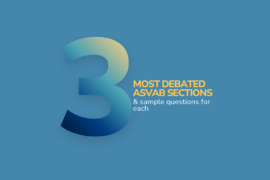General tips for high SAT scores
Relax the night before the test
Don’t cram. You are being tested on knowledge that you have accumulated over the course of the year. And over the past few months especially, you’ve been taking SAT prep. Studying at the last minute will only stress you out. Go to a movie or hang out with a friend — anything to get your mind off of the test!
Rely on the strategies you’ve learned through SAT test prep
The SAT help you’ve gotten over the past few months has included a number of specific strategies that are guaranteed to increase your score during SAT testing. The tips below highlight a number of these strategies. If you need a refresher, be sure to check out the SAT practice test available here at Peterson’s.
Test specific tips for high SAT scores
Evidence-Based Writing
This section requires you to decide if passages can be improved by making changes to the words, punctuation, or sentence order. Read each passage aloud quietly to your self and see if you can identify errors in grammar.
Evidence-Based Reading: Reading Comprehension
The Critical Reading test now includes both long and short reading passages. Skim each passage to see what it’s about. Don’t worry about the details — you can always look them up later if you need to. Just look for the main ideas. Then tackle the questions that direct you straight to the answer by referring you to a specific line in the passage. If you have time afterward, you can try solving the harder questions.
Evidence-Based Writing: Multiple-Choice Questions
There are three types of multiple-choice writing questions on the SAT. The first group, Improving Sentences, tasks you with selecting the correct version – the one that is clearly written and grammatically correct — of an underlined portion of a sentence. Sentence Error questions ask you to figure out which part of a sentence contains an error. Those on Improving Paragraphs test your ability to organize and clarify information. For all of these question types, think about the simplest, clearest way to express an idea. If an answer choice sounds awkward or overly complicated, chances are good that it’s wrong.
Math: Multiple-Choice Questions
As you work through the multiple-choice math questions, you’ll be given reference information (formulas and facts), but you’ll need to know how to use them. In part of this section, you’re allowed to use a calculator, but it won’t help you unless you know how to approach the problems. If you’re stuck, try substituting numbers for variables. You can also try plugging in numbers from the answer choices. Start with the middle number. That way, if it doesn’t work, you can strategically choose one that’s higher or lower.
For more help preparing for test day, check out Peterson’s Test Prep products for practice tests, online courses, guide books, and more.



